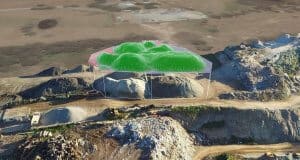Aerial Inspection
September 14, 2017The Use of Drones in Mining Aerial Surveying
September 15, 2017You do not have to be a professional to undertake a drone project. With the right tools, right expertise and direction, anyone can be a drone mapping expert. All it takes is the willingness to learn. Let’s get straight into the steps.
Select a Drone
The first step is to select the right drone. There are many options out there. There is no need to spend thousands of dollars on high-tech specialized drones such as an unmanned LiDAR system. You can get an excellent user friendly drone off Amazon for less than $500. Just because they are low-priced does not mean they are not capable. As a matter of fact, in the right hands these drones can create survey-grade maps. My favorites are the DJI Phantom 3, DJI 4 and the DJI Mavic Pro. These come with good high-resolution cameras. They are also great to use with your smartphones.
Choose the Mapping Solution
You need a mapping solution for your drone mapping job. You will need an application for planning. With this app, you can input the data, and the application will pilot your drone at the right orientation, and so on. It will decide when to take the pictures, which will later be compiled into your photo map.
The data collected will then be compiled and processed by a web-based application, which will transform the data into information. These web platforms will stitch together of the images. With this, you can create 3D models and point clouds. Great UAV mapping platforms include Data Mapper, Drone Deploy, and Pix4D. For starters, why don’t you try Data Mapper?
Plan the Flight
There are rules when it comes to flying a drone, you should not fly near airstrips, nor should you fly over private property. In the same vein, you should not fly over people. Safety should be your first concern, so check your area’s laws. You as the pilot are liable for all damages, infringements, and accidents.
Choose a small area to start with, such as a 100 sq. meter area. Using the Data Mapper application on your phone, plan the flight, and input the coordinates you wish to map. It is very simple. When selecting an area, you can use satellite imagery to aid you select.
Selecting the altitude is crucial, the higher the altitude the faster the job but the lower the resolution. The altitude should depend on the battery time. For a 100 m2, the drone will take 10 minutes to complete the job at a 10-meter altitude, and will take 150 photos, and 2 minutes to complete the job at an altitude of 30 meters and will take just 50 photos. The more photos taken the higher the resolution of the map will be. If your battery life is 20 minutes, then a 10 minutes flight time is best.
Flying the Drone
It is best to choose a clear sunny day for the flying, not an overcast rainy day. Once at your location, using the app, simply press FLY. Make sure the camera’s lighting settings are right before the flight. The application will then pilot the drone and take the pictures.
For the mapping of a building, you should take more pictures at different orientations for a better 3D map. The “Point of Interest” feature in the DJI application can be used to do this.
Review the Photos
If you have the time, review the photos. If youdon’t like them, take new ones. It will save you a return trip. You can take several flights and sort out the images you like to use. Since DJI names the images by order. You can put the images you want to use in a distinct folder, so you can find them easily later.
Upload the Images
The mapping solution services usually offer free trial periods. When this article was written, Data Mapper offered a one-month free trial.
- Just upload the images on the Survey page.
- Select the images you want to use. They should be named according to the order they were taken.
- Fill in the camera details, although they will likely be automatically filled from the image’s metadata.
- Select the output type whether 2D (ortho-mosaic) or 3D point cloud.
- Depending on how huge the project is, processing of the image will take a minutes or even hours.
- Once processing is over, you will get an email notification and you can go check out your first map.
Conclusion
Now that you have gotten started, there is more to come, and more to learn. This article will serve simply as a guide, not a professional tutorial.
